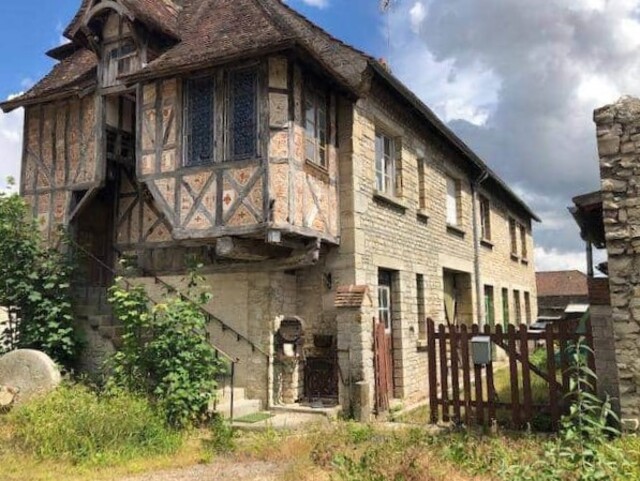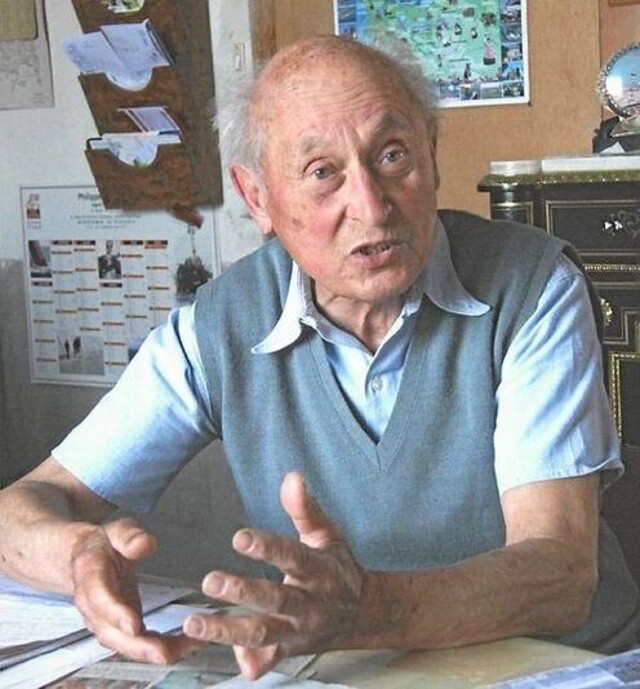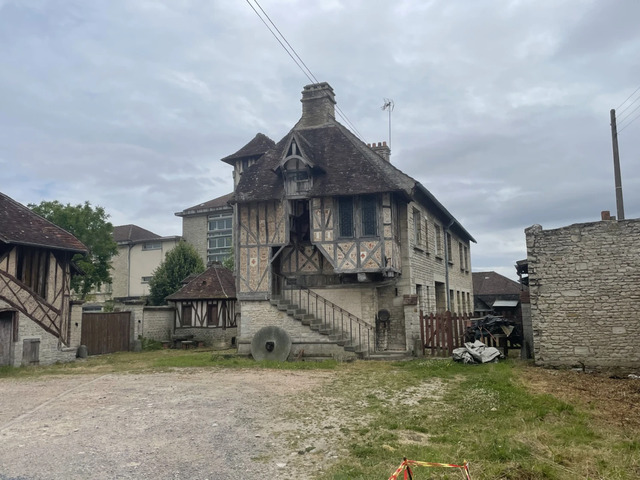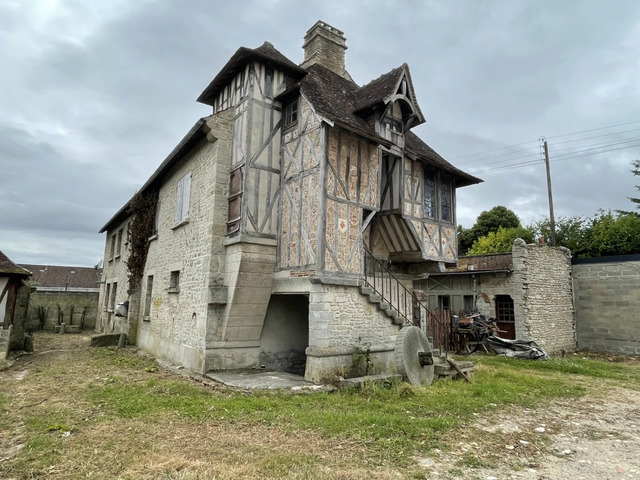At first glance, this quaint house in Argentan, France, feels like a page from medieval history, with its timbered facade and intricate details. Widely celebrated online as a 16th-century gem, it’s easy to believe it dates back to 1509. Yet, this charming home was actually crafted in 1955 by Roland Chauvin, a visionary artisan with a passion for history. Discover the fascinating story behind Argentan’s “medieval” house—a modern tribute that captures the spirit of a bygone era.
Origins and the Misconception
The house in Argentan became an internet sensation, with social media posts and blogs claiming it dates back to the early 16th century. With its distinctive medieval appearance, it’s easy to see why this story spread. People were captivated by the idea that a building with such charm and character could survive the passage of centuries, standing as a silent witness to history. The claim that it was built in 1509 quickly became an accepted fact, shared widely and seldom questioned.

But for those familiar with Argentan’s history, this story didn’t quite add up. Argentan was heavily bombed during World War II, with much of the town reduced to rubble in 1944. Surviving structures from before this era are rare, and the idea that a centuries-old house could remain intact despite the devastation raised eyebrows. This prompted several individuals, including history enthusiasts and online “fake history hunters,” to investigate further. The story of the house’s true origins gradually came to light, debunking the myth of its medieval roots.
Discovering the Truth
The truth behind this house was uncovered through a combination of online sleuthing and local insights. As the house’s fame grew, some keen-eyed observers began to notice details that seemed out of place for a medieval building. The structure’s symmetry, the type of woodwork, and certain architectural elements hinted at a more recent origin. These inconsistencies prompted a closer look, and through reverse-image searches and digital exploration on platforms like Google Maps, researchers pinpointed the house’s location behind 72 Rue Aristide Briand in Argentan.

This discovery led to the realization that the house wasn’t a historical artifact from 1509 but a modern creation. Through further digging, it became clear that the house was built in 1955 and designed to resemble a medieval structure. The decorative elements, added in the 1960s by the owner, Roland Chauvin, further enhanced its old-world charm. With this information, the truth of the house’s story emerged, dispelling the myth of its ancient origins.
The Real Story of Roland Chauvin and His Craftsmanship
The real architect behind Argentan’s “medieval” house was Roland Chauvin, a talented craftsman born in 1922. A native of Argentan, Chauvin was well-regarded in the community for his skills as a saddler and upholsterer. His talent extended far beyond his primary trade; he was a versatile craftsman with a passion for creating beautiful and intricate pieces. Throughout his career, Chauvin worked on several castles in Western Normandy, and one of his proudest achievements was creating a custom mattress for Queen Elizabeth’s visit to Château de Sassy.

In the 1960s, Chauvin decided to transform his own home, adding medieval-style decorations that gave it its unique look. Using his skills, he crafted details that mimicked the architectural styles of centuries past, including half-timbered facades and intricate woodwork. These additions gave the house its distinct character, fooling many into believing it was a relic of another era. Chauvin’s work was so meticulous that even locals who knew him were sometimes surprised by the authenticity of his designs. Despite his dedication to his craft, he was known to be a humble man, often doing work without charging or “forgetting” to send invoices—a trait that made him beloved in the community.
Life in Argentan During and After World War II
To understand the significance of Chauvin’s creation, it’s essential to consider the historical context of Argentan. In 1944, during the final stages of World War II, Argentan suffered extensive bombing, leaving much of the town in ruins. Roland Chauvin and his family, like many others, endured the horror and upheaval of this time. Chauvin and his sister Denise were in their twenties, and their family narrowly escaped the devastation by digging a trench and covering it with earth and logs, creating a makeshift shelter. When they emerged, they found their town in ruins—a sight so traumatic that it haunted Denise for years to come.
The Chauvin family’s home was destroyed, and they had to start from scratch, piecing together a temporary shelter from salvaged materials. Eventually, as the town rebuilt itself, Chauvin managed to acquire land and build a new home in 1955. It’s likely that his decision to decorate his house in a medieval style was influenced not only by his love for craftsmanship but also by a desire to connect with a history that had been shattered by war. By creating a house that looked like it belonged to another time, Chauvin may have been attempting to restore a sense of continuity and timelessness in a place that had seen so much destruction.

The House’s Legacy and Popularity Today
Today, Chauvin’s house stands as a testament to the power of creativity and the human spirit. Though it was built in the mid-20th century, its carefully crafted design continues to captivate people around the world. The house has become a sensation on social media, with photos of its medieval-style façade regularly shared and admired. Many viewers are still fooled by its appearance, believing it to be a centuries-old relic, and the story of its “discovery” only adds to its allure.
For the people of Argentan, Chauvin’s house is more than just an architectural curiosity—it’s a part of their local heritage. It reflects the resilience of a town that rebuilt itself from ruins and the ingenuity of a man who used his skills to create something extraordinary. Although Chauvin passed away in 2016, his work lives on, celebrated by locals and visitors alike. His house serves as a reminder of the talent and creativity that can thrive even in the aftermath of devastation, and it has become a symbol of pride for the community.

Conclusion
Argentan’s “medieval” house may not date back centuries, but its charm and story are just as compelling. Built in 1955 and crafted into a historical illusion by Roland Chauvin in the 1960s, it stands as a modern homage to a bygone era. Each shared photo celebrates not only its medieval allure but also Chauvin’s legacy, capturing the artistry behind its timeless appeal. This house reminds us that beauty can be crafted as much by imagination as by age, blending past and present into a lasting tribute to one man’s vision.
